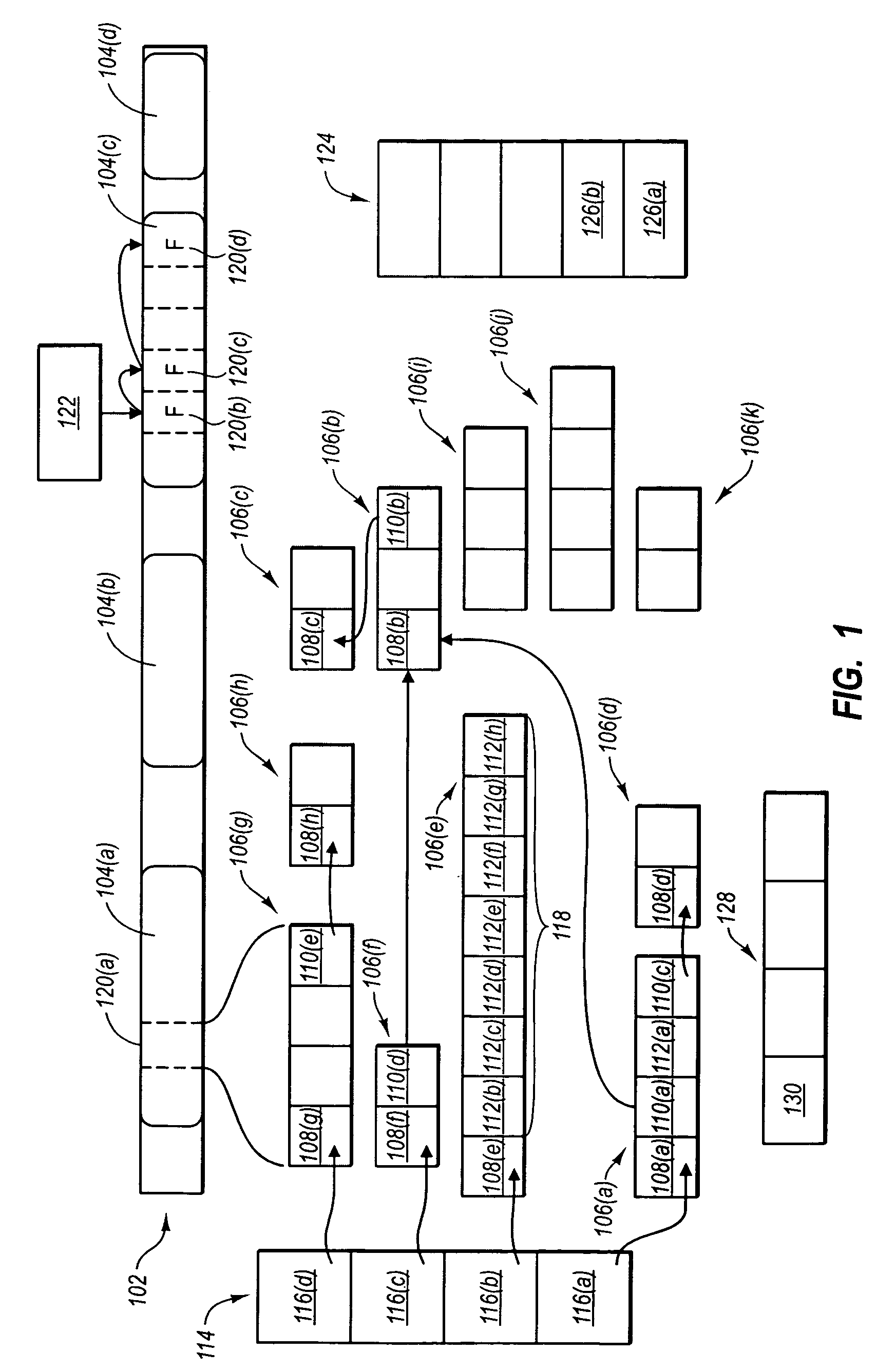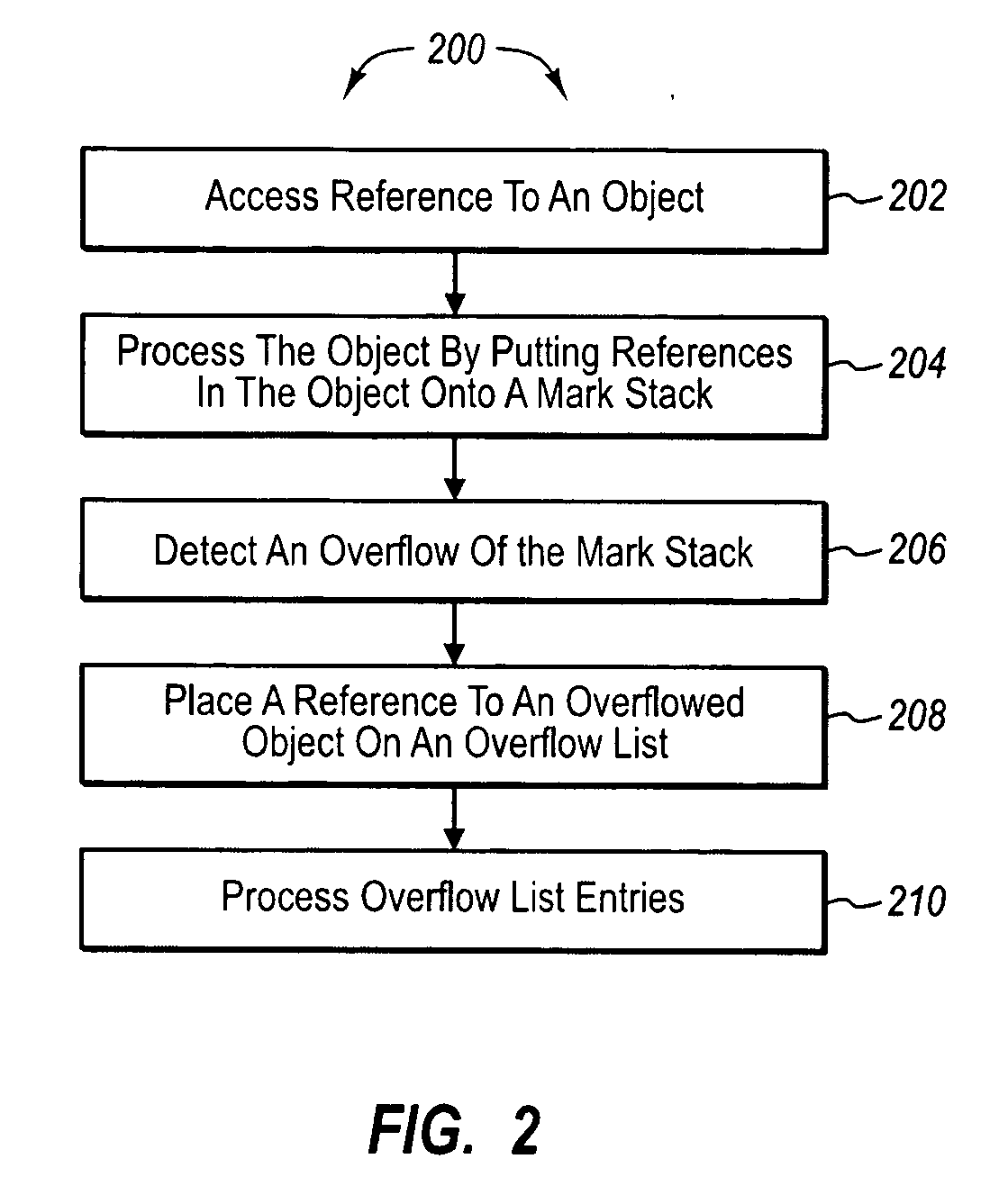Using an overflow list to process mark overflow
a mark stack and overflow technology, applied in the field of using an overflow list to process mark stack overflow, can solve problems such as mark stack overflow, malicious attacks that can be used to compromise data, and memory allocation and de-allocation types suffer from a number of drawbacks
- Summary
- Abstract
- Description
- Claims
- Application Information
AI Technical Summary
Benefits of technology
Problems solved by technology
Method used
Image
Examples
Embodiment Construction
[0013]As noted above, it can be very expensive to process overflowed objects during a garbage collector mark phase when all objects that fall in an overflow range have to be examined. When the number of objects that overflow is small, it can be more efficient to put them on a list so that they can be later processed without looking at all objects within an overflow range on the heap. If the number of overflowed objects is small enough to fit in the list, this list is used to process the mark overflow.
[0014]Referring now to FIG. 1, examples of various garbage collection activities and allocation activities are illustrated. FIG. 1 illustrates a heap 102. The heap 102 comprises system memory, such as system RAM or other system memory that can be used to store objects. The heap 102 includes a number of segments 104. It should be noted that this point that references to designators in the Figures may be made generically or specifically when the Figures include more than one instance of a...
PUM
 Login to View More
Login to View More Abstract
Description
Claims
Application Information
 Login to View More
Login to View More - R&D
- Intellectual Property
- Life Sciences
- Materials
- Tech Scout
- Unparalleled Data Quality
- Higher Quality Content
- 60% Fewer Hallucinations
Browse by: Latest US Patents, China's latest patents, Technical Efficacy Thesaurus, Application Domain, Technology Topic, Popular Technical Reports.
© 2025 PatSnap. All rights reserved.Legal|Privacy policy|Modern Slavery Act Transparency Statement|Sitemap|About US| Contact US: help@patsnap.com



